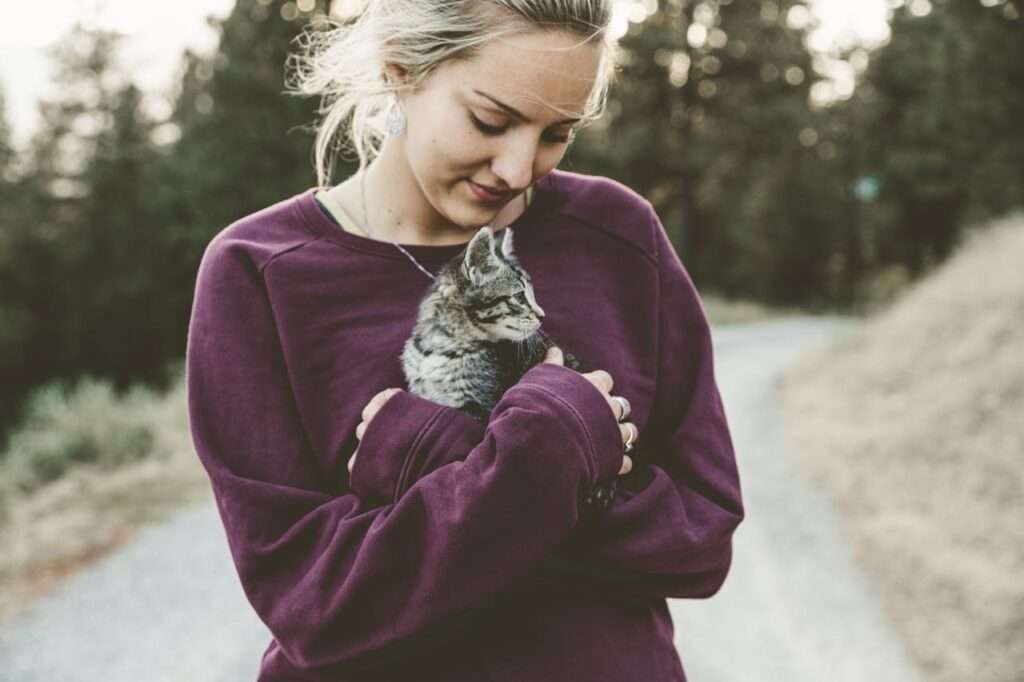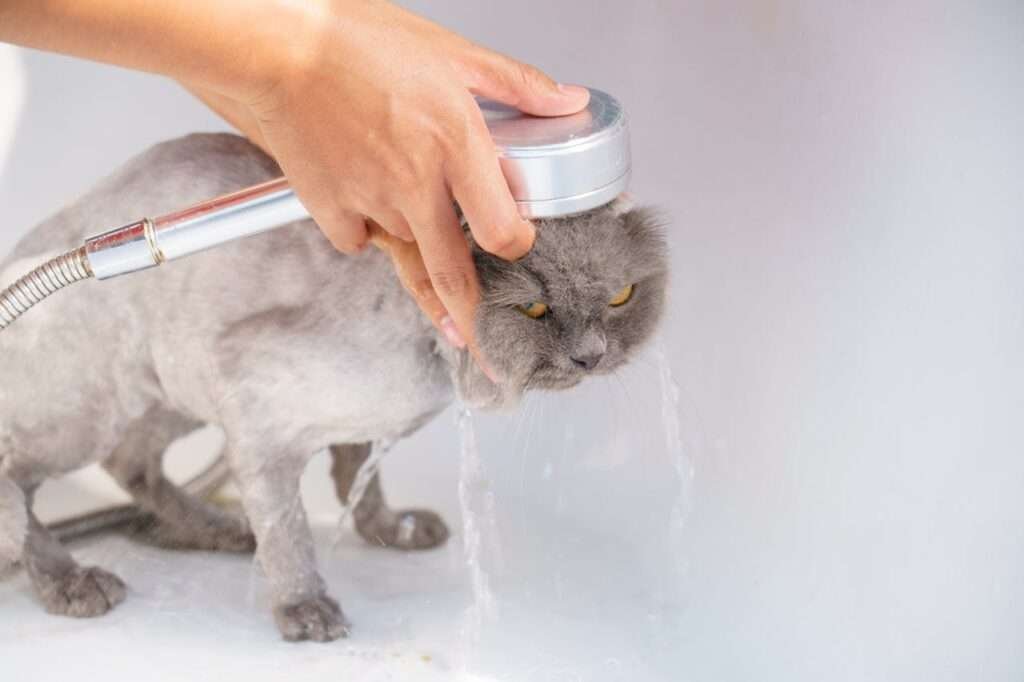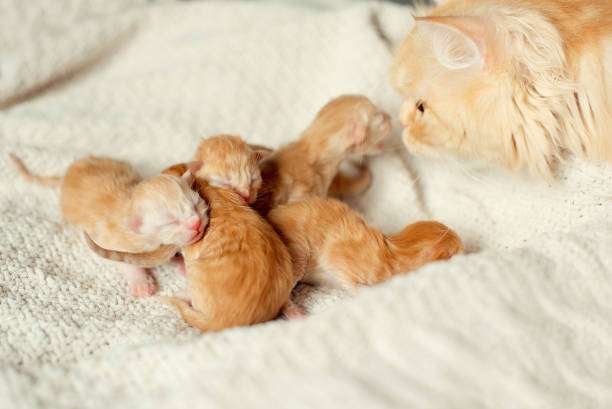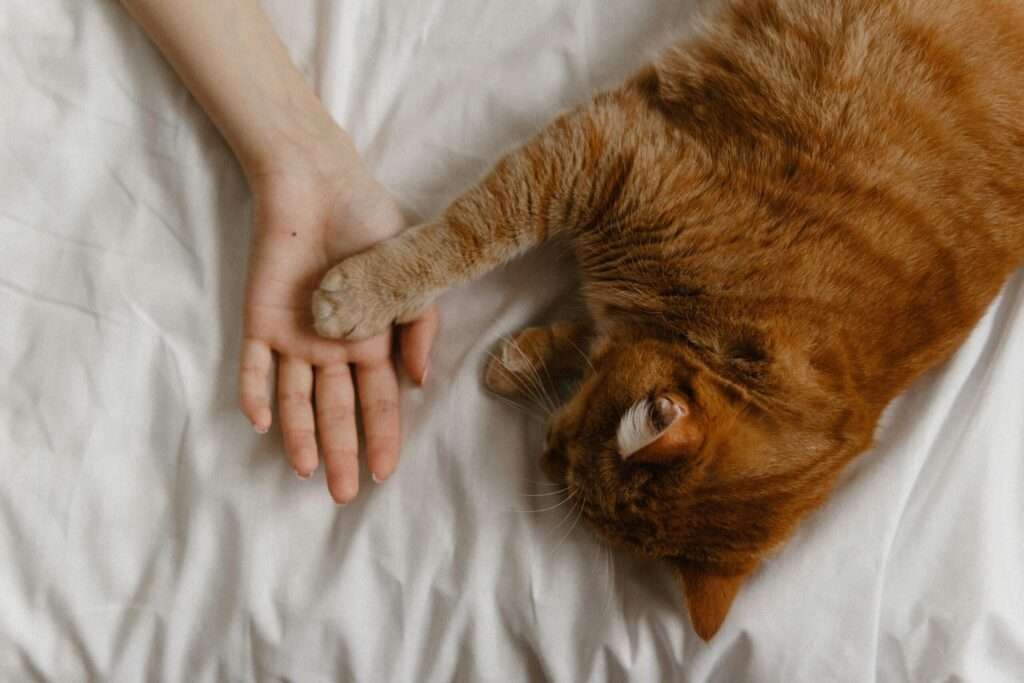
Preparation for feeding
Before each feeding, make sure the bottle and nipple are sterilized by boiling water. Warm the formula to room temperature, either by microwaving the bottle for no more than 10 seconds (avoid boiling) or by placing the bottle in a bowl of hot water for a few minutes. Wash your hands thoroughly before and after each feeding to prevent the spread of germs to kittens and other household pets. Alternatively, you can use latex surgical gloves for each feeding to reduce contamination.
Maintain cleanliness
Many breeders prefer to wear a special t-shirt, sweatshirt or apron when feeding the kittens, which is kept exclusively in the room where the kittens are kept. It helps prevent cross-contamination of viruses between pets. Positioning kittens during feeding is crucial for surrogate-mom bonding. Different people may have different approaches to bottle feeding, but the goal is to mimic the position a mother cat would normally take while nursing.
Feeding technique
One method is to place the kitten on its stomach on a towel or cloth, so that it will instinctively curl its paws. Alternatively, you can sit cross-legged on the floor with the kitten between your legs, allowing it to rest its paws on your leg while nursing. Always use a fresh, clean towel on your lap for each feeding session.
Preparing Mini Kitten Feeding Schedule
- Morning Meal: Start the day by feeding your kitten one-third of their daily food requirement as soon as you wake up, or when your energetic fur baby rouses you. You can offer wet or dry food, but if it’s wet, remove the bowl after about 15 minutes to prevent spoilage. While dry food can be left out during the day and night, ensure to refresh their water bowl with clean water.
- After Breakfast Bathroom Break: Introduce your kitten to their litter box after their morning meal. Most kittens quickly grasp the concept of using the litter box, but consult your vet for litter training advice if needed.
- Midday Meal: Around three hours after breakfast, it’s time for lunch! During this time, your kitten may alternate between playing energetically and taking naps. Kittens require both nourishment and rest to support their growth.
- Evening Meal: Serve dinner to your kitty, providing another one-third of their daily food portion. Consider leaving out some dry food before bedtime. Establishing a bedtime routine early on helps your kitten understand the household’s need for peace and quiet at night.

Monitoring your cat’s gain
Monitoring a kitten’s weight gain is crucial for their health and development. Ideally, kittens should gain around ½ ounce every day, totaling about 4 ounces per week. Using a kitchen or small postal scale, weigh them consistently at the same time daily. If a kitten shows no weight gain or experiences weight loss for more than 24 hours, it’s essential to consult a veterinarian promptly. Alongside weight, assessing a kitten’s hydration is vital. A healthy kitten should have a round belly, indicating proper nourishment. Additionally, you can check hydration levels by gently pulling up the skin at the scruff of their neck. If the skin promptly bounces back, hydration is sufficient. However, if the skin returns slowly or fails to bounce back, the kitten may require a dose of subcutaneous fluids to maintain hydration.
Can you offer human foods?
Before including human food in your kitten’s diet, it is crucial to conduct thorough research. Although some human foods are safe for cats, it is essential to consult a veterinarian for recommended portions, as they may differ from normal cat food servings. Safe human foods for kittens include fish, meat, cheese, bananas, pumpkin, eggs, and oatmeal.
However, it is important to be careful with food, as many cats are allergic to certain foods. Foods that are toxic to cats include chocolate, grapes, raisins, onions, garlic, and even some types of dog food. If you have other pets in your home, consult your vet to ensure your kitten’s safety if they are tempted to spill Fido’s food.
Grooming and Dirt Removal
Grooming an orphaned kitten after adoption is essential to their health and well-being. Since they are exposed to various environmental factors and dirt before being rescued, cleaning them helps prevent potential infections and skin problems. Regular grooming also encourages bonding between kittens and their new caregivers, providing comfort and security. Additionally, removing dirt and debris from their fur allows their skin to breathe and reduces the risk of matting, which can be uncomfortable and cause skin irritation. Overall, proper grooming ensures that the kitten stays clean, healthy and happy in their new home.

The Importance of Cat Grooming
While cats are generally proficient at grooming themselves, there are certain grooming tasks that require human assistance to ensure their well-being. These include:
- Conducting a weekly flea check to prevent infestations.
- Identifying and addressing mats in your cat’s fur before they become unmanageable.
- Addressing any dermatological issues by scheduling a vet appointment.
- Monitoring your cat’s weight to ensure their health and well-being.
- Trimming your cat’s nails regularly to prevent overgrowth and discomfort.
- Inspecting your cat’s skin for irregularities or signs of infection during weekly brushing sessions.
- Engaging in brushing sessions as a positive way to bond with your cat.
If you notice any irregularities or have concerns, we recommend scheduling a veterinary appointment promptly.
Cat Grooming Services Offered
At Cosmo and Aurora Veterinary Care, we provide a range of grooming services tailored to your cat’s needs, including:
- Ear cleaning to maintain ear health and prevent infections.
- Cleaning soiled fur to reduce odors and maintain hygiene.
- Nail trimming to keep your cat’s claws at a comfortable length.
- Medical bathing treatments to address specific skin conditions.
- Thorough brushing, especially beneficial for long-haired cats prone to fur matting.
- Aromatherapy services to reduce stress and promote relaxation.
- Professional grooming at competitive prices, ensuring your cat receives top-quality care.
- “Waterless” shampoo baths with brush-outs for a convenient grooming experience.
- Full lion-cut grooming for long-haired breeds in need of specialized grooming.

Cat Bathing
From a veterinary perspective, bathing cats is rarely necessary as they typically groom themselves effectively. However, if your cat gets into something that needs to be promptly removed from their fur, follow these tips:
- Use a mild shampoo suitable for cats.
- Ensure the water temperature is warm, neither too hot nor too cold.
- Conduct the bathing process in a small area to prevent your cat from running off.
- Familiarize yourself with proper cat handling techniques before bathing.
If dermatological conditions arise, bathing with a prescribed cleanser may be recommended by your veterinarian.
Cat Claw Trimming
Trimming your cat’s claws can be challenging and requires proper technique to avoid injury. Here are some tips:
- Expert yourself on how to hold your cat comfortably during nail trimming.
- Use specialized cat nail clippers designed for safe trimming.
- Trim only the very tip of the nail to avoid cutting the quick, which contains blood vessels.
- Repeat the trimming process gradually until the quick recedes enough to trim the nail to the proper length.
- If unsure, seek professional assistance for cat claw trimming to avoid causing undue stress or injury to your cat.
Cat Haircuts
Most veterinarians advise against cutting your cat’s fur except in cases of severe matting or specific grooming styles like the “lion’s cut.” However, these cuts should be performed by professionals to minimize stress and ensure safety.
Tips for At-Home Grooming
- Comb long-haired cats regularly to prevent matting and tangles.
- Leave nail clipping to professionals to avoid injury to your cat or yourself.
- Promptly address any signs of itching, biting, or skin conditions by scheduling a vet appointment.
By following these grooming tips and utilizing professional grooming services when needed, you can ensure that your cat remains clean, healthy, and happy in their home environment.
|







